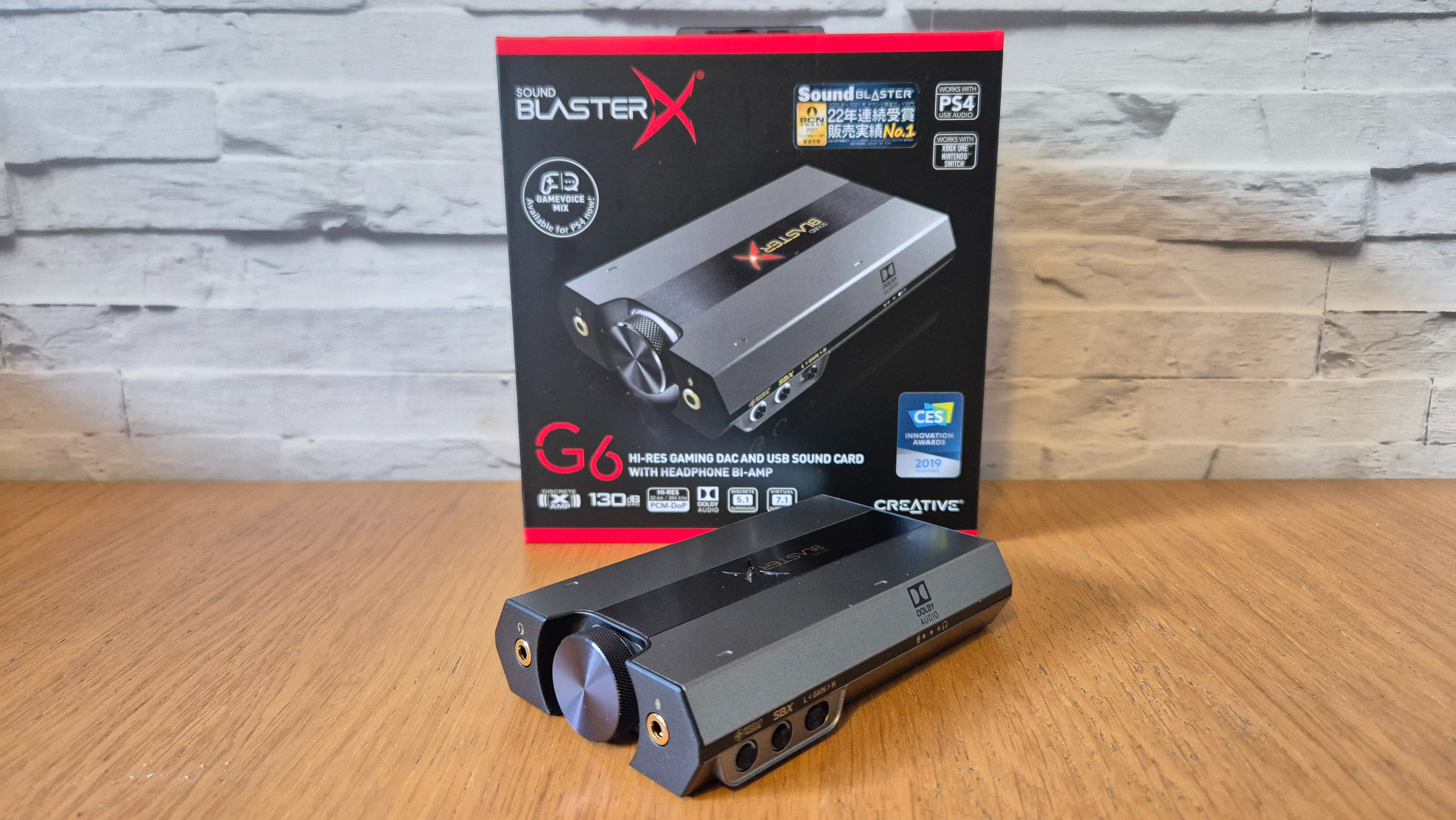
I have long thought, after nearly a full seven years of testing, taking in, and reviewing gaming hardware, that both my console and gaming PC setups were fully optimised for my preferred performance and layout - bar the occasional tinkering to add new or updated models, of course.
How wrong I was until a couple of months ago, when the concept of USB sound cards (or USB DACs as they are sometimes called) entered my thoughts.
Often a readily and easily overlooked accessory, a USB sound card is a simple thing on paper: acting as a mid-way point between a wired gaming headset or set of headphones and your PC or console that is designed to boost, enhance, change, and elevate your entire audio experience.
I’m no audio snob, really, but I like the finer things in gaming when they're there to be enjoyed, and so I was open to seeing what these cards could offer - and after testing a couple, I can say that the benefit has been exceptional.

A return to being tethered
Eager to see what all the fuss was about and coincidentally having a few wired gaming headsets in at the same time for review or testing, I got in a few USB sound cards to check them out. While I downsized my setups due to a house move, I committed to using the Creative Sound Blaster X4 on my PC with my Sennheiser HD 550 headphones.
On PS5 Pro, I plugged in the Creative Sound BlasterX G6 to use with a Drop + EPOS PC38X wired gaming headset - which meant I could definitely utilise the sound card’s ports fully as intended. While I will admit, on a practical level, having a long headset cable from the TV unit to the sofa is not really a viable thing, my next gaming-stroke-office setup will have me closer, and I reckon that kind of layout will immediately make a wired-in model much more agreeable.
This one is an older model (sir), but it still very much checks out. One thing that ages is a simple port on the rear: it uses micro-USB. Anyway, turns out class really is permanent, and it performs just like something out of this generation of gaming accessories and very much holds its own in 2025.
Sign up for breaking news, reviews, opinion, top tech deals, and more.

Hearing things differently
I’m a huge fan of what Sony has brought to the table in terms of audio with the PS5, and ensuring some of the console’s power was used for the Tempest 3D audio was always a wise decision.
However, I seem to have accidentally (well, on purpose) trumped Sony’s own efforts by adding the Creative G6 to my PS5 setup. Even the crudest of A/B testing I did after plugging it in blew me away. It’s like I’ve opened up an audio door that I didn’t even know was there - and behind it was just More Quality Audio.
The likes of Death Stranding: Director's Cut, Senua’s Saga: Hellblade 2 Enhanced, the Indiana Jones DLC, and even Diablo 4 all sound extra incredible now. Details are clearer and sweeter, the bottom end has next to zero muddiness (even if it was great before), while the mids and tops sing through any mix. Inconsequential sounds like ‘landscape noises’ as I call them - the rustling of leaves, the wind in the air - are beautifully presented now, and each game’s score is punchier than ever.
On PC, I do feel I have to earn my audio quality a little bit by messing around with the Creative app - and also adding even more audio options for Windows to try and ruin or default to - but the work has been worth it. When listening to classical music while working, or using the HD 550s for meetings, everything is crisp and super clear, like never before. In games, the audio is just spectacular; I feel I can hear every clank of every tiny gear in Frostpunk 2, no matter where it is, while the cacophony of action in Control or even Warhammer 40,000: Dawn of War 3 is less chaotic and much more enjoyable, with elements clearly and brilliantly cutting across each other. The bass is on another level, too.
So, all in, I’m really starting to think this might be it for my setups now; the audio is just that good. I’m not sure if I can truly stay tethered in every gaming session - or simply rely on speakers sometimes too - but the cards themselves are staying firmly plugged in.
You might also like...
- I had low expectations for Borderlands 4 – but it’s now one of my favorite games of the year
- Best of Gamescom Awards 2025 – our 11 favorite games and products from this year’s show
- The Order of the Giants is a video game expansion done right – here are six reasons why you should jump into the new Indiana Jones and the Great Circle DLC

Rob is the Managing Editor of TechRadar Gaming, a video games journalist, critic, editor, and writer, and has years of experience gained from multiple publications. Prior to being TechRadar Gaming's Managing Editor, he was TRG's Deputy Editor, and a longstanding member of GamesRadar+, being the Commissioning Editor for Hardware there for years, while also squeezing in a short stint as Gaming Editor at WePC just before joining TechRadar Gaming. He is also a writer on tech, gaming hardware, and video games but also gardens and landscapes, and has written about the virtual landscapes of games for years.
You must confirm your public display name before commenting
Please logout and then login again, you will then be prompted to enter your display name.